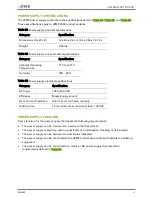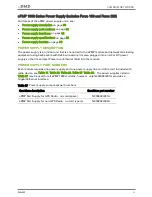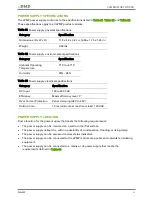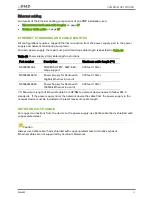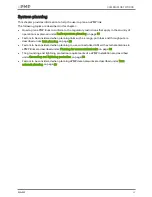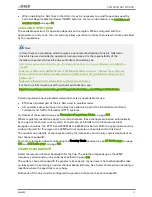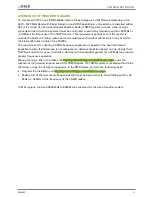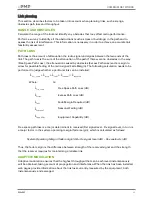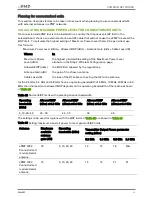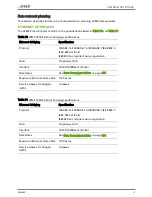
CAMBIUM NETWORKS
026v003
95
Link planning
This section describes factors to be taken into account when planning links, such as range,
obstacles path loss and throughput.
RANGE AND OBSTACLES
Calculate the range of the link and identify any obstacles that may affect radio performance.
Perform a survey to identify all the obstructions (such as trees or buildings) in the path and to
assess the risk of interference. This information is necessary in order to achieve an accurate link
feasibility assessment.
PATH LOSS
Path loss is the amount of attenuation the radio signal undergoes between the two ends of the
link. The path loss is the sum of the attenuation of the path if there were no obstacles in the way
(Free Space Path Loss), the attenuation caused by obstacles (Excess Path Loss) and a margin to
allow for possible fading of the radio signal (Fade Margin). The following calculation needs to be
performed to judge whether a particular link can be installed:
capability
seasonal
fade
excess
space
free
L
L
L
L
L
_
Where:
Is:
space
free
L
_
Free Space Path Loss (dB)
excess
L
Excess Path Loss (dB)
fade
L
Fade Margin Required (dB)
seasonal
L
Seasonal Fading (dB)
capability
L
Equipment Capability (dB)
Free space path loss is a major determinant in received (Rx) signal level. Rx signal level, in turn, is
a major factor in the system operating margin (fade margin), which is calculated as follows:
System Operating Margin (fade margin) dB = Rx signal level (dB)
–
Rx sensitivity (dB)
Thus, the fade margin is the difference between strength of the received signal and the strength
that the receiver requires for maintaining a reliable link.
ADAPTIVE MODULATION
Adaptive modulation ensures that the highest throughput that can be achieved instantaneously
will be obtained, taking account of propagation and interference. When the link has been installed,
web pages provide information about the link loss currently measured by the equipment, both
instantaneously and averaged.
Summary of Contents for ePMP
Page 198: ...CAMBIUM NETWORKS 026v003 198 Figure 61 SM Radio page Standard WiFi mode ...
Page 230: ...CAMBIUM NETWORKS 026v003 230 Figure 66 SM Network page Router mode ...
Page 466: ...CAMBIUM NETWORKS 026v003 466 ...
Page 467: ...CAMBIUM NETWORKS 026v003 467 ...
Page 468: ...CAMBIUM NETWORKS 026v003 468 Figure 87 FCC and IC certifications on 2 4 GHz product labels ...



